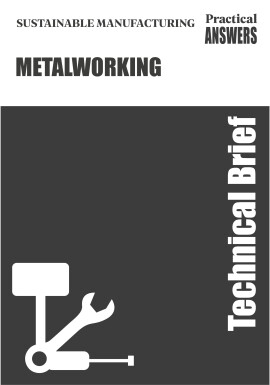
Small-scale Soapmaking
A handbook
Making soap in the context of protracted economic difficulties has meant not only the development of a simple method that could meet rural conditions, but one that could survive the temperament of the wildly fluctuating marketplace as well. Peter Donkor’s book describes the development of soapmaking in Europe and Ghana, and goes on to provide detailed instructions on small-scale production methods for the developing world. Peter Donkor is uniquely equipped to write about the process which has been tried and tested, not only in the sterile laboratories of the Ghana Standards
Board, but also in the bustling shops and stalls of the Ghanaian marketplace.
Published: 1986
Pages: 88
eBook: 9781780443416
Paperback: 9780946688371
Board, but also in the bustling shops and stalls of the Ghanaian marketplace.
| PREFACE | |||
|---|---|---|---|
| ACKNOWLEDGEMENTS | |||
| CHAPTER 1: INTRODUCTION | |||
| 1.1 Brief History of Soapmaking | |||
| 1.1.1 The Development of Soapmaking in Europe | |||
| 1.1.2 The Development of Soapmaking in Ghana | |||
| 1.1.3 Large-scale Soap Production in Ghana | |||
| 1.1.4 The Role of Research Institutions in Ghana | |||
| 1. 2 Definition and Properties of Soap | |||
| 1.3 Hydrolysis of Soap | |||
| 1.4 Detergent Action | |||
| CHAPTER 2: RAW MATERIALS FOR SOAPMAKING | |||
| 2.1 Fats and Oils | |||
| 2.1.1 Classification of Fats and Oils | |||
| 2.1.2 Brief Chemistry of Fats and Oils | |||
| 2.1.3 Common Oils Used in Ghana for Soapmaking | |||
| 2.2 Alkalis | |||
| 2.2.1 Caustic Soda | |||
| 2.2.2 Description of Process for Local Production | |||
| 2.2.3 Caustic Potash | |||
| 2.2.4 Description of Process for Local Production | |||
| 2.3 Other raw materials | |||
| CHAPTER 3: THE CHOICE OF SUITABLE OILS AND FATS FOR SOAPMAKING | |||
| 3.1 Saponification Value | |||
| 3.2 Iodine Number | |||
| 3.3 INS Factor | |||
| 3.3.1 Practical Application of Factor | |||
| 3 .4 Lathering and Solubility Properties of Soap | |||
| CHAPTER 4: PLANT AND EQUIPMENT FOR SOAPMAKING | |||
| 4.1 Equipment and Plant for Laundry Soapmaking | |||
| 4.1.1 Soap Boiling Tanks | |||
| 4.1.2 Caustic Soda Storage Tanks | |||
| 4.1.3 Soap Moulding Boxes | |||
| 4.1.4 Soap Cutting Tables | |||
| 4.1.5 Soap Stamping Machines | |||
| 4.2 Equipment and Plant for Toilet Soapmaking | |||
| 4.2.1 Mixing Machines | |||
| 4.2.2 Milling Machines | |||
| 4.2.3 Plodders | |||
| 4.3 Other Equipment and Tools | |||
| CHAPTER 5: PRE-TREATMENT OF FATS AND OILS FOR SOAPMAKING | |||
| 5 .1 Refining of Oils and Fats | |||
| 5 .1.1 Alkali Refining | |||
| 5 .1.2 Another Clarification Method | |||
| 5.1.3 Bleaching of Oils and Fats | |||
| CHAPTER 6: THE PROCESS OF SOAPMAKING | |||
| 6.1 Semi-boiling Process | |||
| 6.1.1 Processing method | |||
| 6.2 Full-boiling Process | |||
| 6.2.1 Saponification Process | |||
| 6.2.2 Graining Out | |||
| 6.2.3 Clear Boiling and Fitting | |||
| 6.3 Treatment of Settled Soaps | |||
| 6.3.1 Liquoring | |||
| 6.3.2 Filling | |||
| 6.3.3 Framing | |||
| 6.3.4 Drying and Stamping | |||
| 6.4 Cold Process | |||
| CHAPTER 7: SMALL-SCALE PRODUCTION OF TOILET SOAP | |||
| 7 .1 Cold Process | |||
| 7 .2 Milled Toilet Soapmaking | |||
| 7.2.1 Drying of Soap Base | |||
| 7.2.2 Mixing of Perfume and Dye | |||
| 7.2.3 Milling | |||
| 7.2.4 Compressing | |||
| 7 .2.5 Cutting and Stamping | |||
| 7.3 Remelted Soaps | |||
| CHAPTER 8: NON-EDIBLE OILS FOR SOAPMAKING | |||
| 8.1 Neem Oil | |||
| 8.1.1 Soapmaking properties | |||
| 8.2 Castor Oil | |||
| 8.2.1 Soapmaking Properties | |||
| 8.3 Physic Oil | |||
| 8.3.1 Soapmaking Properties | |||
| 8.4 Process of Soapmaking | |||
| CHAPTER 9: GHANA STANDARDS SPECIFICATIONS FOR SOAPS | |||
| 9 .1 Filled Hard Soap Specifications | |||
| 9.2 Genuine Hard Soap Specifications | |||
| 9.3 Filled Carbolic Soap Specifications | |||
| 9.4 Toilet Soap Specifications | |||
| 9 .5 Medicated Soap Specifications | |||
| 9. 6 Packaging and Marking of Soaps | |||
| APPENDIX 1: Some typical formulations for soaps | |||
| APPENDIX 2: Properties of soaps from different oils/fats |
Peter Donkor
Professor Peter Donkor, MD is the second Provost of the College of Health Sciences at Kwame Nkrumah University of Science and Technology in Kumasi, Ghana.
Valorization of Tannery Limed Fleshings Through Fat Extraction: An Approach to Utilize By-Product
Abul Hashem, Md.
Shahruk Nur-A-Tomal, Md.
Waste and Biomass Valorization, Vol. 8 (2017), Iss. 4 P.1219
https://doi.org/10.1007/s12649-016-9705-z [Citations: 13]




